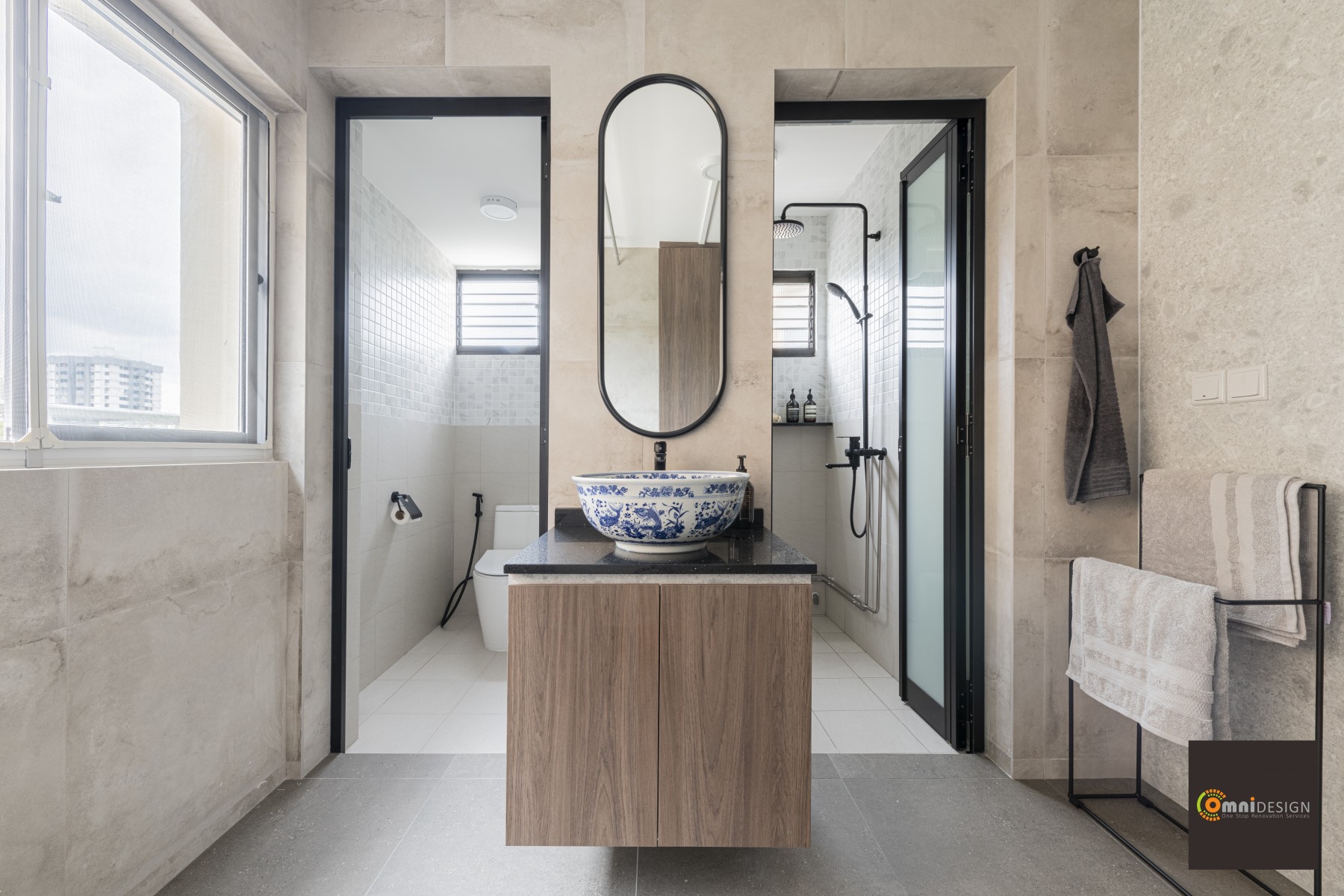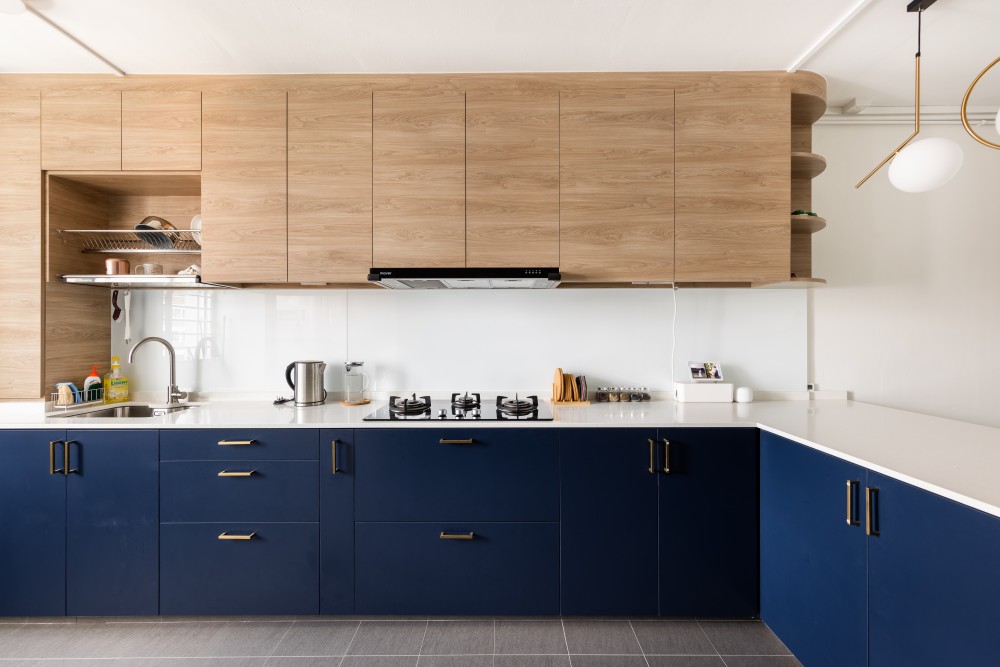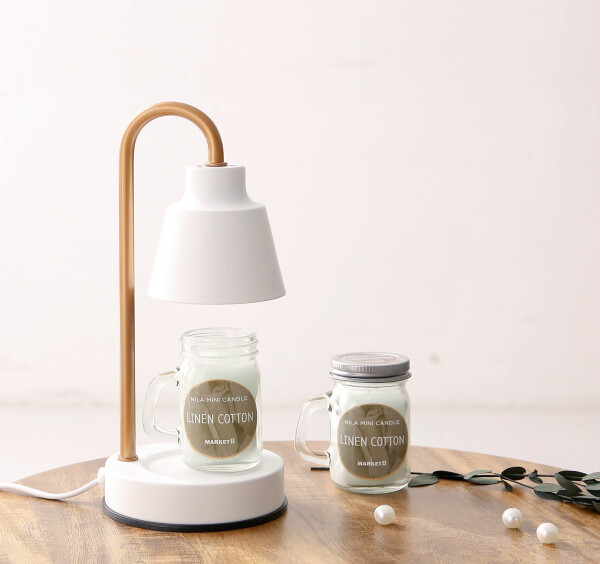The Ultimate Guide to Sensory-Friendly Renovations: Designing Spaces for Comfort and Calm
Creating sensory-friendly spaces is becoming an increasingly important aspect of home design, particularly in busy, urban environments like Singapore.
Whether you’re renovating to accommodate specific sensory sensitivities or simply want to create a more peaceful living space, sensory-friendly design focuses on reducing overstimulation and enhancing calm.
In this guide, we’ll explore how to transform your home into a comforting sanctuary.
Understanding Sensory-Friendly Design
As we navigate the hustle and bustle of modern life in Singapore, our homes should be a sanctuary – a place to relax, rejuvenate, and find peace.
But what, exactly, is sensory-friendly design?
What Makes a Space Sensory-Friendly?
A sensory-friendly space is one that reduces overstimulation by carefully balancing sensory inputs like lighting, sound, texture, and colour. Instead of chaotic layouts, sharp contrasts, or harsh lighting, these spaces embrace softer aesthetics, smoother transitions, and elements that soothe the senses. The goal is to create an environment that feels peaceful and promotes relaxation.
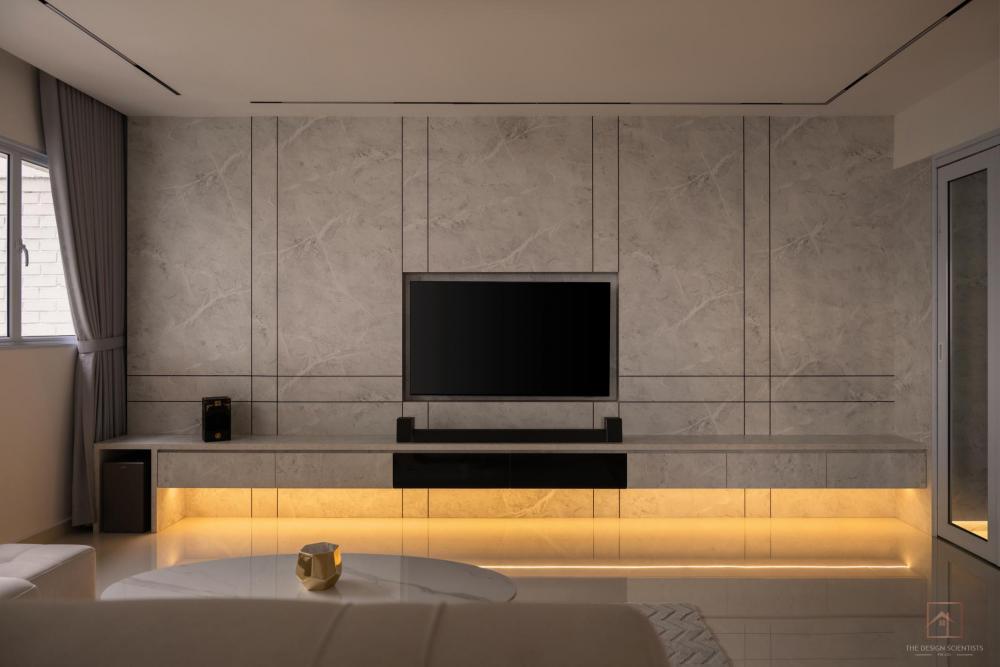

547 Jurong West St 42 ($88,000) by The Design Scientists
Some key elements of sensory-friendly spaces include:
- Lighting: Soft, adjustable lighting that avoids harsh glare or overly bright areas.
- Sound: Minimal background noise with acoustic treatments to reduce echoes and distractions.
- Texture: Smooth, soft fabrics and finishes that create a sense of comfort without overwhelming tactile sensations.
- Color: Calming, neutral, or pastel tones that promote mental relaxation rather than loud, intense hues that can feel overwhelming.
These elements work together to craft an environment that reduces stress and sensory overload, making the space feel welcoming and serene.
Who Will Benefit from Sensory-Friendly Design?
While sensory-friendly design was originally developed with neurodivergent individuals in mind, its benefits extend far beyond that group. Anyone can enjoy the advantages of a well-designed, calming space.
First, sensory-friendly design is particularly beneficial for people who are neurodivergent (such as those with autism, ADHD, or sensory processing disorder), or anyone who may experience heightened sensitivity to certain sensory stimuli.
Bright lights, loud noises, or rough textures can cause discomfort or stress, and creating a home that limits these triggers is essential for their well-being. For neurodivergent individuals, sensory-friendly spaces help reduce sensory overload and provide a calming, safe environment where they can thrive.
Next, sensory-friendly design is beneficial to working adults as well. In today’s fast-paced, high-pressure world, many adults experience stress and fatigue from their daily lives. Whether it’s the constant demands of work, commuting, or managing family life, adults often crave spaces where they can relax and unwind.
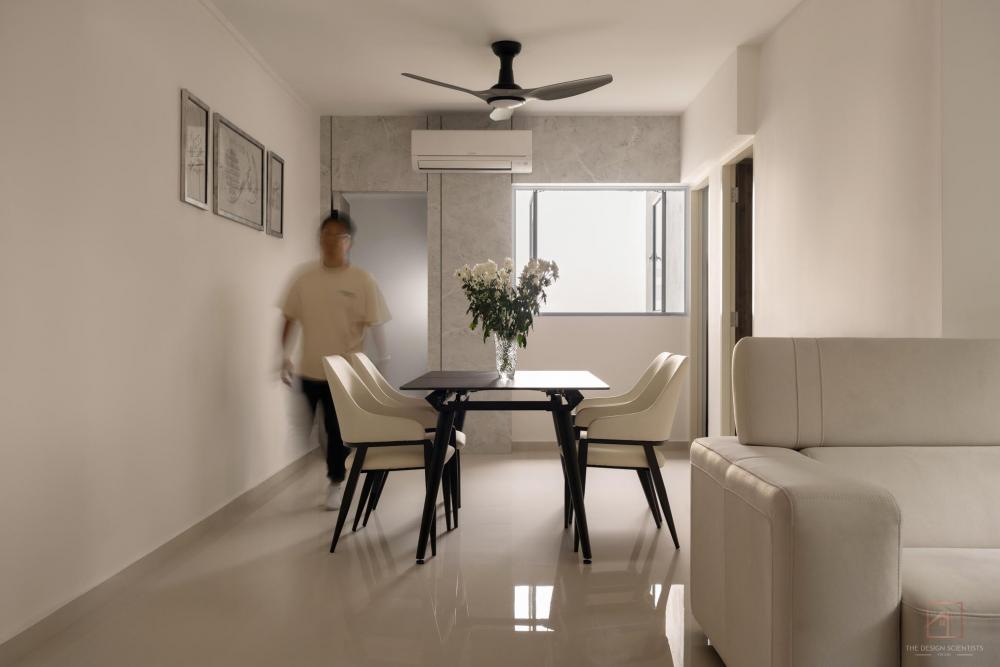

547 Jurong West St 42 ($88,000) by The Design Scientists
Sensory-friendly designs are particularly appealing for those who want to escape the sensory overload of city life, providing a peaceful retreat that promotes mental clarity and emotional balance. After a long, busy day in Singapore’s bustling environment, coming home to a sensory-friendly space can make all the difference in maintaining mental well-being.
Last but not least, kids are often highly sensitive to sensory stimuli, especially in environments like schools or childcare, where large groups of children may create noise and chaos. With extracurricular activities such as tuition, piano lessons, and CCAs (co-curricular activities), children today lead busy, structured lives.
A sensory-friendly home offers them a quiet and calm space where they can retreat, decompress, and recharge. Creating such spaces helps children manage overstimulation and enhances their ability to focus and feel at ease.
Step 1: Choosing Calming Color Schemes
Color plays a crucial role in influencing mood and energy levels, and it’s one of the most important elements to consider when designing a sensory-friendly space.
The right colour palette can help create a soothing environment that promotes relaxation and comfort. By using calming colours, you can reduce feelings of stress and overstimulation, turning your home into a peaceful sanctuary.
Using Neutral Tones for a Peaceful Atmosphere
Neutral tones, such as soft whites, beiges, and greys, are often the go-to colours for sensory-friendly designs.
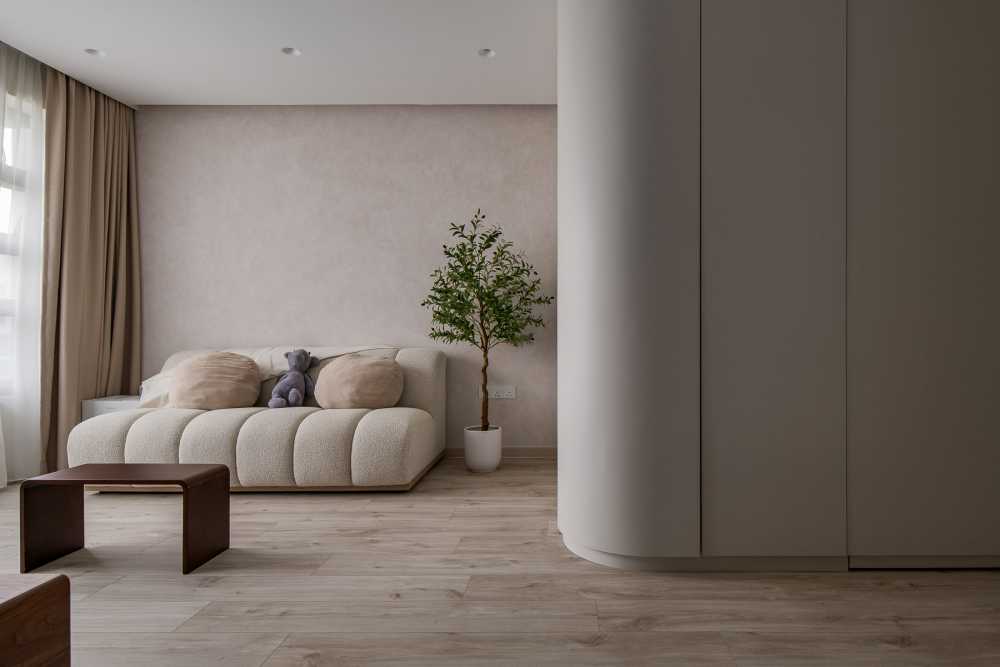

635B Tampines ($65,000) by Mr Designer Studio
These shades are understated and create a clean, clutter-free backdrop that promotes mental clarity and calm.
- Warm Neutrals: Warm-toned neutrals, like beige and cream, bring a sense of coziness and warmth to a space. They make rooms feel inviting without being overwhelming, which is perfect for creating a comfortable, relaxing home environment.
- Cool Neutrals: Cool-toned neutrals, such as soft greys or off-whites, can help create a serene and spacious atmosphere. They work particularly well in Singapore’s humid climate, where cooler tones can make a room feel fresh and airy.
Neutral colours can also act as a versatile foundation for adding other soothing hues or subtle accents, making them an essential part of a sensory-friendly design.
Using Soft Pastels for a Gentle, Calming Vibe
Soft pastels, such as light blues, pale greens, and muted pinks, are excellent choices for creating a calming and gentle environment. These colours evoke feelings of serenity and balance, making them ideal for spaces meant for rest and relaxation.
- Pale Blues: Light blue tones have long been associated with calmness and tranquility. Incorporating pale blues into your space (whether through paint, furniture, or decor) can help reduce stress and anxiety, creating a sense of mental peace.
- Muted Greens: Green is known for its natural, refreshing qualities and is often linked to relaxation and rejuvenation. Muted shades of green, like sage or mint, can bring a subtle touch of nature into your home without overstimulating the senses.
- Blush Pinks: Soft pinks, especially those with a dusty or muted tone, offer a gentle, nurturing feel to a space. This colour works particularly well in bedrooms or relaxation areas where you want to create a sense of warmth and comfort.
Pastels are excellent for introducing colour without overwhelming the senses, especially in smaller Singapore homes where bright or intense hues may feel too stimulating.
Avoiding Overly Bold or Bright Colors
While bright colours can energize a space, they may also contribute to overstimulation, particularly for those with sensory sensitivities. Bold or intense hues, such as neon yellows, bright reds, or stark blacks, can make spaces feel chaotic and stressful rather than calming.
- Overstimulation: Colors like bright red or orange can increase feelings of anxiety and agitation, which is the opposite of what a sensory-friendly space aims to achieve. While these colours might work as accents in small doses, they should be avoided as dominant colours in large areas like walls or furniture.
- Clashing Colors: Using too many contrasting colours in one space can create visual clutter, making the room feel disorganized and overwhelming. Sensory-friendly spaces thrive on harmony and balance, so it’s best to stick with a cohesive colour scheme that promotes flow and simplicity.
Instead, stick to muted or neutral tones, and if you do want to introduce some brighter hues, use them sparingly as accent colours rather than primary ones.
Incorporating Nature-Inspired Colors
Nature-inspired colours, such as earthy browns, soft greens, and deep blues, can help bring a sense of calm and grounding to your home. These shades mimic the soothing tones found in natural environments, helping to create a peaceful retreat from Singapore’s bustling city life.
- Earth Tones: Colors like tan, terracotta, and soft browns create a sense of warmth and stability. These tones are especially effective in living rooms or bedrooms, where comfort and grounding are essential for relaxation.
- Deep Blues: Darker shades of blue, such as navy or midnight blue, evoke feelings of depth and calmness. Used strategically, they can help create an intimate, cozy space, perfect for quiet reading nooks or serene bedrooms.
Nature-inspired colours can be particularly beneficial for sensory-friendly spaces, as they help connect your home to the natural world, fostering a sense of calm and well-being.
Step 2: Soundproofing for Serenity
Noise can be a major trigger for sensory overload. In busy cities like Singapore, noise from traffic, neighbors, and construction can disrupt the calm in your home. To create a sensory-friendly environment, it’s essential to reduce unwanted sound as much as possible.
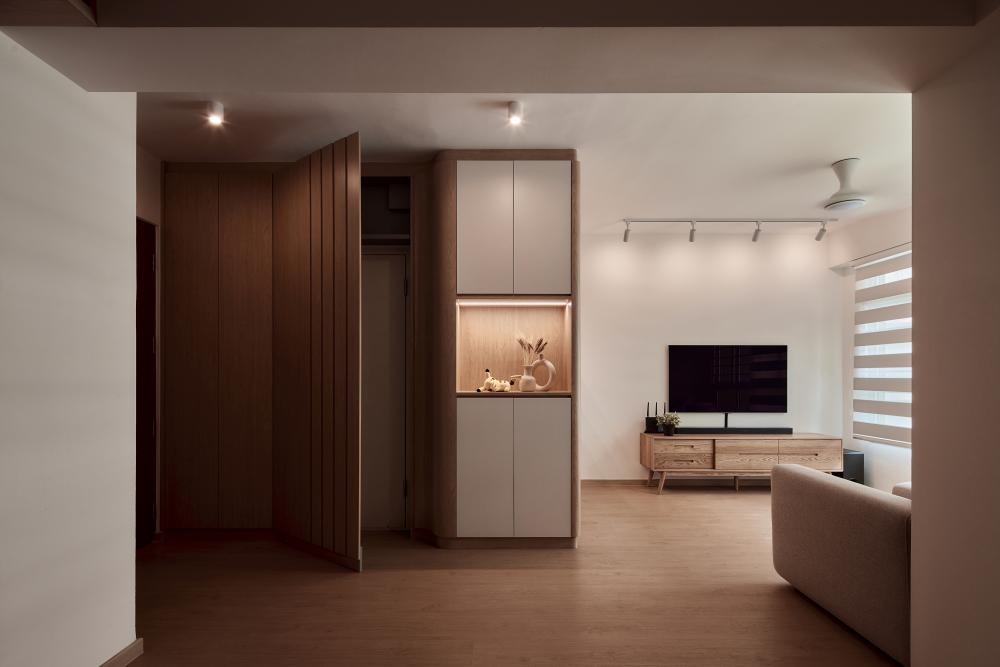

358C Ubi Road 3 ($78,000) by Starry Homestead Pte Ltd
Acoustic Panels and Treatments
Acoustic panels are designed to absorb sound and reduce echoes within a space. They are an effective way to manage sound quality and create a more peaceful environment.
- Wall Panels: Installing acoustic panels on walls can help absorb sound and prevent it from bouncing around the room. These panels come in various styles and colours, so you can choose ones that fit your aesthetic while improving sound quality.
- Ceiling Tiles: Acoustic ceiling tiles are another option for reducing noise, particularly in high-rise apartments where sounds from above can be a concern. They work by absorbing sound and preventing it from traveling through the ceiling.
- Floor Mats: Using acoustic floor mats or carpets can help minimize sound transmission between floors. These mats are especially useful in apartments or multi-level homes to reduce noise from footsteps and other activities.
Acoustic treatments are a valuable addition to any sensory-friendly space, contributing to a quieter and more comfortable environment.
Soft Furnishings for Noise Reduction
Soft furnishings not only add comfort but also play a role in sound absorption. By strategically placing these items, you can help dampen noise and create a more serene atmosphere.
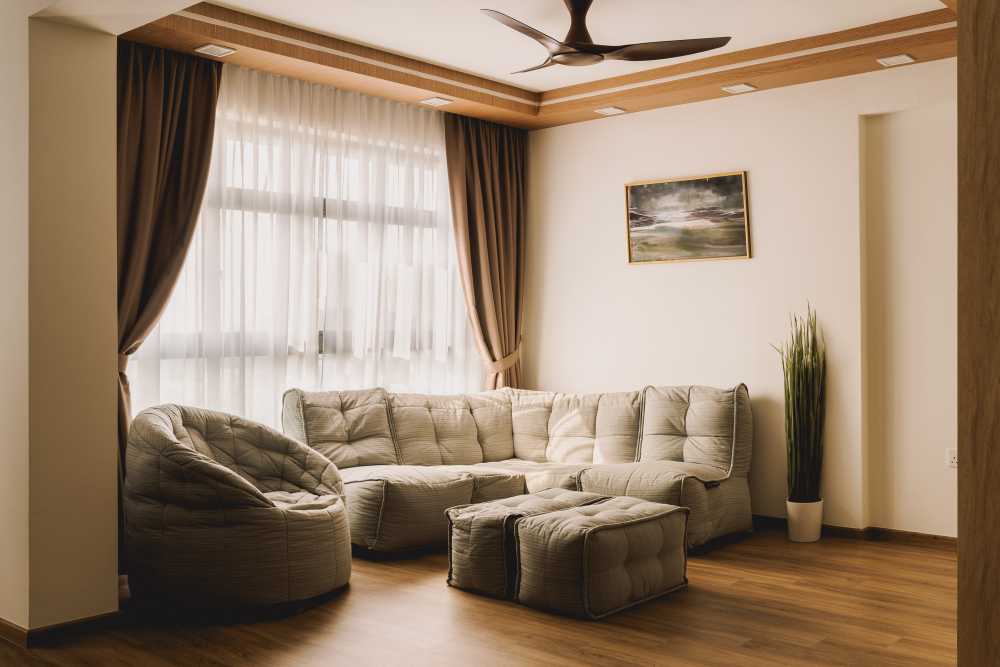

Clementi Peaks ($45,000) by Design 4 Space Pte Ltd
- Heavy Curtains: Installing thick, heavy curtains on windows can help block out external noise and reduce sound reflection within the room. Look for curtains made of dense fabrics like velvet or linen for the best sound-absorbing properties.
- Upholstered Furniture: Soft, upholstered furniture pieces, such as sofas and armchairs, can help absorb sound and prevent it from echoing throughout the room. Choose plush, comfortable fabrics to enhance both acoustics and relaxation.
- Area Rugs: Large, plush area rugs can significantly reduce noise from hard flooring surfaces. They help absorb sound and create a more cushioned, quiet environment.
Incorporating these soft furnishings into your design not only adds to the sensory comfort of the space but also contributes to a more peaceful living environment.
Sealing Gaps and Insulating Walls
Proper sealing and insulation are essential for effective soundproofing. By addressing gaps and improving wall insulation, you can reduce the amount of noise that enters or leaves a room.
- Weatherstripping: Apply weatherstripping to doors and windows to seal gaps and prevent noise from entering the room. This simple measure can make a significant difference in reducing external sound.
- Soundproofing Insulation: Consider installing soundproofing insulation within walls and ceilings to enhance noise reduction. This type of insulation helps block sound transmission and create a quieter interior environment.
- Door Seals: Adding acoustic door seals can further reduce sound leakage around doors. These seals are designed to fit around the edges of doors and prevent noise from seeping through.
Addressing these structural elements helps ensure that your home remains quiet and serene, contributing to a more comfortable and stress-free environment.
White Noise Machines and Soundscapes
White noise machines and soundscapes can be used to mask unwanted noises and create a calming auditory environment. These devices produce soothing sounds that help drown out disruptive noises and promote relaxation.
- White Noise Machines: White noise machines generate a consistent sound that masks other noises, making them ideal for creating a calming atmosphere. They can be particularly useful in bedrooms or home offices where a quiet environment is essential.
- Nature Sound Machines: Nature sound machines offer a variety of soothing sounds, such as rain, ocean waves, or birds chirping. These sounds can help create a tranquil ambiance and enhance relaxation.
- Background Music: Soft, instrumental background music can also help mask external noise and contribute to a serene atmosphere. Choose calming, non-intrusive music that complements your design and promotes relaxation.
Using these auditory tools can enhance the sensory-friendly nature of your home by reducing unwanted noise and creating a more pleasant acoustic environment.
Step 3: Lighting for Comfort
Lighting is crucial in sensory-friendly design because both harsh lighting and overly dim spaces can be uncomfortable. Aim for soft, adjustable lighting that creates a warm and calming atmosphere.
Emphasizing Natural Light
Natural light has a profound effect on mood and energy levels. Maximizing the amount of natural light in your home can help create a bright, uplifting environment that promotes well-being.
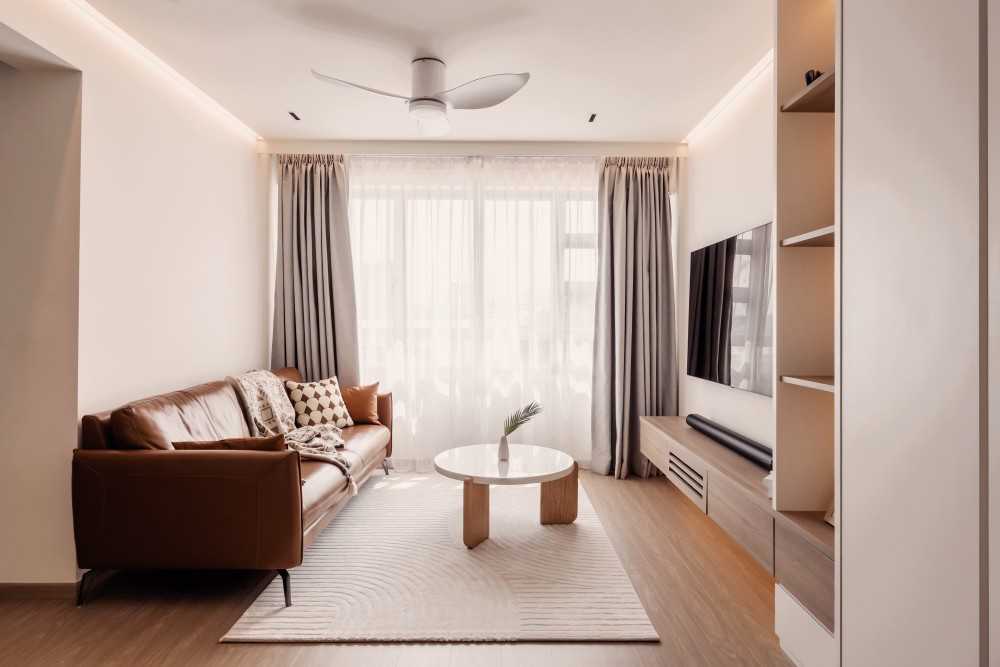

18A Circuit Road ($65,000) by Starry Homestead Pte Ltd
- Window Treatments: Use sheer or light-filtering window treatments to allow natural light to enter while maintaining privacy. These treatments soften the intensity of sunlight and create a pleasant, diffused glow throughout the room.
- Reflective Surfaces: Incorporate reflective surfaces, such as light-coloured walls or mirrors, to help bounce natural light around the room. This can enhance the overall brightness and make the space feel more open and airy.
- Skylights: For those who stay in landed properties, consider installing skylights to bring more natural light into your home. Skylights can brighten up spaces that may not have many windows, such as bathrooms or internal rooms.
Maximizing natural light not only improves the sensory experience of a space but also contributes to energy efficiency and overall well-being.
Using Soft, Warm Lighting
Soft, warm lighting creates a soothing and inviting atmosphere. Unlike harsh or bright lighting, which can be jarring, warm lighting promotes relaxation and comfort.
- Warm LED Bulbs: Choose warm LED bulbs for a gentle, amber glow that mimics natural light. These bulbs are ideal for living areas, bedrooms, and other spaces where relaxation is a priority.
- Dimmable Lights: Install dimmable lighting fixtures to adjust the brightness according to your needs. This allows you to create a softer, more calming light for relaxation or a brighter light for tasks.
- Table and Floor Lamps: Use table and floor lamps with warm bulbs to provide localized, soft lighting. Lamps with adjustable shades or dimmers can further enhance the comfort of your space.
Soft, warm lighting helps create a serene environment, reducing eye strain and promoting a sense of calm.
Avoiding Harsh or Flickering Lights
Harsh or flickering lights can be disruptive and uncomfortable, especially for individuals with sensory sensitivities. It’s important to choose lighting that minimizes these issues and contributes to a calming atmosphere.
- Fluorescent Lights: Avoid using harsh fluorescent lighting, which can cause glare and flicker. Instead, opt for LED or incandescent bulbs that provide a more stable and gentle light.
- Direct Overhead Lights: Minimize the use of harsh direct overhead lighting, which can create stark shadows and an uncomfortable glare. Use diffused lighting sources, such as pendant lights with frosted shades, to soften the illumination.
- Consistent Light Quality: Ensure that all lighting fixtures provide consistent light quality to avoid sudden changes in brightness or colour temperature. Inconsistent lighting can be visually jarring and contribute to sensory overload.
By avoiding harsh and flickering lights, you create a more comfortable and soothing environment that supports relaxation and well-being.
Incorporating Adjustable Lighting Layers
Layered lighting allows for greater flexibility and control over the ambiance of a room. By combining different types of lighting, you can create a more versatile and comfortable environment.
- Ambient Lighting: This is the primary source of illumination in a room, providing overall brightness. Use ceiling fixtures or recessed lights to create a general, even light.
- Task Lighting: Task lighting focuses on specific areas where activities occur, such as reading or cooking. Incorporate desk lamps, under-cabinet lights, or adjustable reading lights to provide focused illumination where needed.
- Accent Lighting: Accent lighting adds visual interest and highlights specific features, such as artwork or architectural elements. Use wall sconces, LED strips, or spotlights to create a warm and inviting atmosphere.
Incorporating adjustable lighting layers allows you to tailor the lighting to different activities and moods, enhancing the sensory experience of your home.
Step 4: Sensory-Friendly Materials and Textures
Selecting the right materials and textures is essential for creating a sensory-friendly home environment.
Materials and textures influence how a space feels to the touch and can impact overall comfort and relaxation. By choosing sensory-friendly materials, you can ensure that your home remains a calm and soothing retreat, free from discomfort and sensory overload.
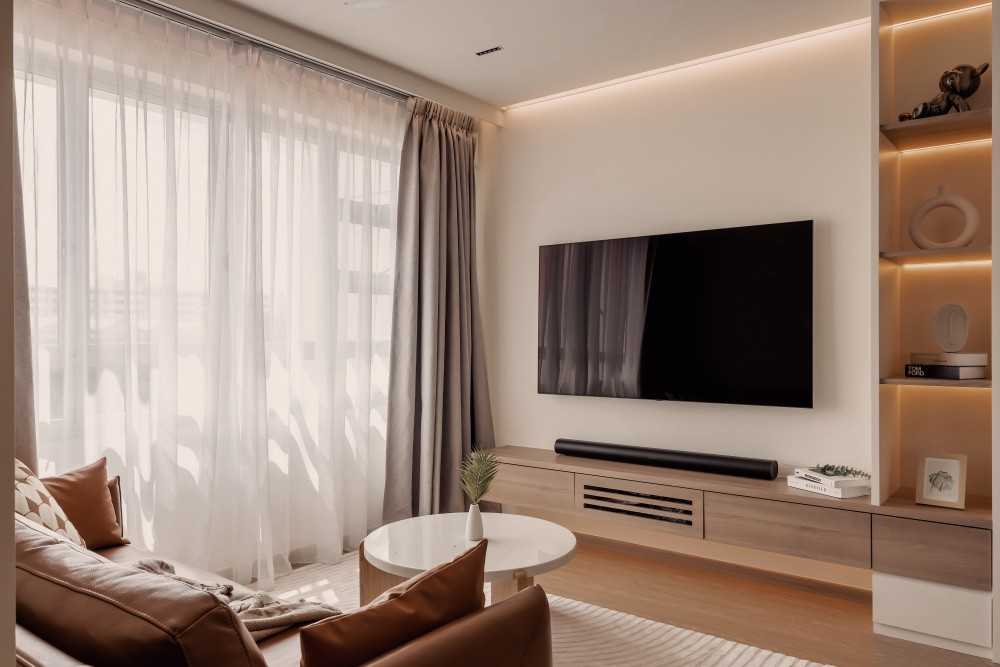

640 Senja Close ($25,000) by Starry Homestead Pte Ltd
Choosing Soft and Gentle Materials
Soft and gentle materials can significantly enhance the tactile comfort of your space. These materials provide a comforting touch and help create a cozy, inviting atmosphere.
- Velvet and Chenille: Velvet and chenille are plush fabrics that offer a luxurious, soft touch. These materials are perfect for upholstery, throw pillows, and blankets, providing a comforting and warm feel.
- Microfiber: Microfiber is known for its softness and durability. It’s an excellent choice for furniture upholstery and bedding, offering a smooth, gentle texture that’s easy to clean and maintain.
- Cotton and Wool: Cotton and wool are natural fibers that are both soft and breathable. Cotton is ideal for bedding, curtains, and cushions, while wool adds warmth and softness to rugs and throws.
Incorporating these soft materials into your design helps create a soothing and sensory-friendly environment, enhancing overall comfort.
Avoiding Harsh or Irritating Textures
Harsh or irritating textures can create discomfort and detract from the overall sensory experience of your home. It’s important to avoid materials that might feel abrasive or unpleasant to touch.
- Rough Surfaces: Avoid using materials with rough or coarse textures, such as certain types of unfinished wood or abrasive fabrics. These can be uncomfortable to touch and disrupt the calming atmosphere you’re aiming to achieve.
- Highly Textured Fabrics: Fabrics with overly textured surfaces, like heavy brocade or rough tweed, can be irritating. Opt for smoother, softer fabrics that provide a more gentle tactile experience.
- Plastic and Synthetic Materials: Some plastic and synthetic materials can feel harsh or sticky. Choose natural or high-quality synthetic materials that offer a softer, more pleasant touch.
By avoiding harsh and irritating textures, you can create a more comfortable and sensory-friendly space that promotes relaxation and well-being.
Incorporating Natural and Organic Elements
Natural and organic materials can enhance the sensory experience by adding a touch of nature and grounding to your space. These materials often provide a soothing and calming effect.
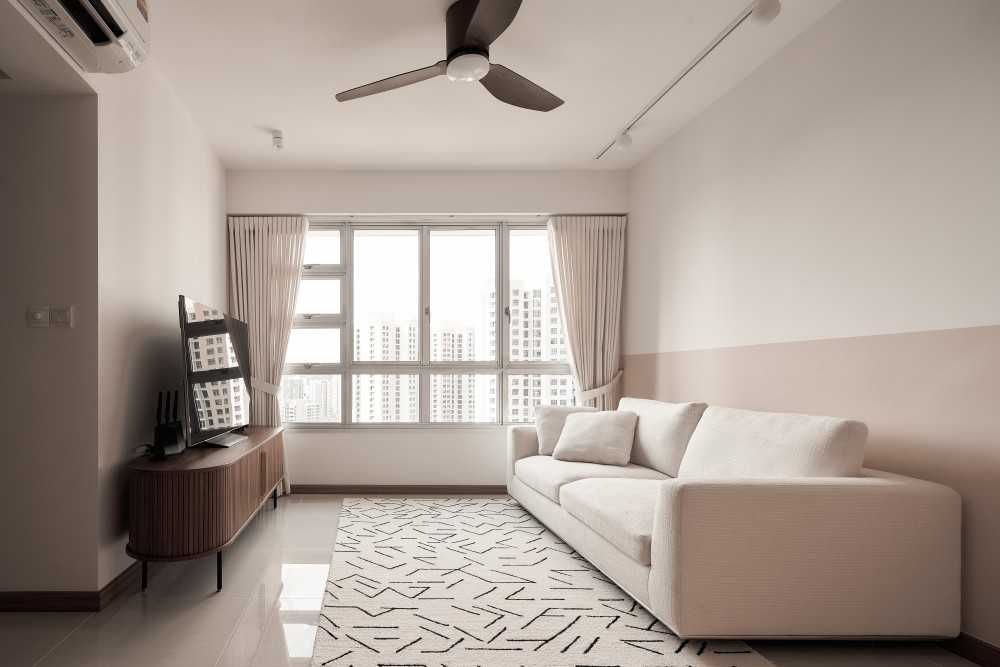

402A Northshore Drive ($58,300) by Homies Design
- Wood and Stone: Natural wood and stone materials bring a sense of warmth and connection to nature. Use these materials for flooring, furniture, or decorative accents to create a calming and earthy ambiance.
- Bamboo and Rattan: Bamboo and rattan are natural fibers that offer a smooth, tactile experience. They are ideal for furniture, wall coverings, and decorative elements, adding a natural and soothing touch to your home.
- Live Plants: Incorporate live plants to add a touch of nature and improve air quality. Plants contribute to a calming environment and can enhance the overall sensory experience.
Using natural and organic materials helps create a grounding and tranquil environment, contributing to a more sensory-friendly space.
Choosing Comfortable Flooring Options
Flooring plays a crucial role in the tactile experience of your home. Selecting comfortable and visually pleasing flooring options can enhance overall comfort and reduce sensory discomfort.
- Soft Carpets: Soft carpets provide a plush and comfortable surface underfoot, absorbing sound and reducing noise. Choose high-quality carpets with a dense pile for added comfort and luxury.
- Cork Flooring: Cork flooring is a soft, resilient material that offers a cushioned feel and excellent sound absorption. It’s also eco-friendly and provides a warm, comfortable surface.
- Vinyl Flooring: Vinyl flooring comes in a variety of textures and finishes, many of which are designed to mimic natural materials. Opt for cushioned vinyl options to provide a softer, more comfortable surface.
Choosing comfortable and sensory-friendly flooring options helps enhance the overall tactile experience of your home, contributing to a more relaxed and inviting environment.
Step 5: Minimizing Clutter for Mental Clarity
Clutter can significantly impact mental clarity and overall well-being. An organized, clutter-free environment promotes a sense of calm and helps reduce stress and anxiety.
In Singapore’s often compact living spaces, effective organization and decluttering are essential for maintaining a serene and functional home. By focusing on minimizing clutter, you create a space that supports mental clarity and enhances daily living.
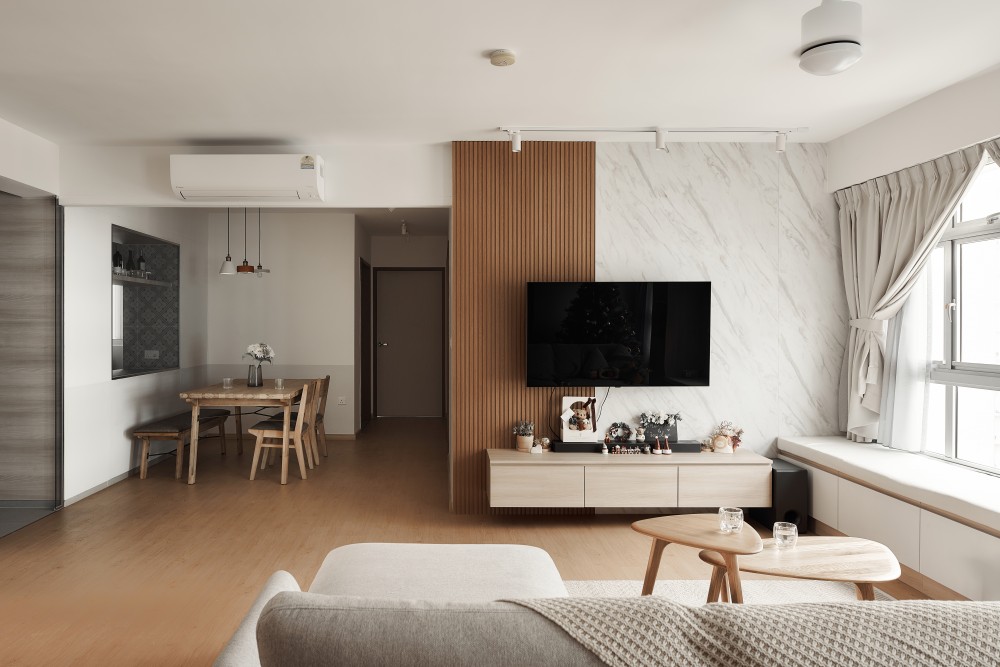

18A Circuit Road ($65,000) by Starry Homestead Pte Ltd
Implementing Smart Storage Solutions
Effective storage solutions are key to keeping your space organized and clutter-free. By using smart storage strategies, you can maximize your available space and keep belongings neatly tucked away.
- Built-in Shelving: Built-in shelves and cabinetry offer a seamless way to store and display items while saving space. Utilize vertical space to keep surfaces clear and organized.
- Multi-Functional Furniture: Invest in furniture that serves multiple purposes, such as storage ottomans or beds with drawers. These pieces help reduce clutter by providing hidden storage for everyday items.
- Over-the-Door Organizers: Use over-the-door organizers for additional storage in areas like closets or bathrooms. These organizers are perfect for keeping small items like shoes, toiletries, or cleaning supplies neatly arranged.
Smart storage solutions help keep your home organized and contribute to a calm, clutter-free environment.
Establishing Effective Organizational Systems
Creating effective organizational systems ensures that every item has its place, making it easier to maintain order and reduce clutter.
- Labeling: Use labels on storage bins, boxes, and shelves to clearly identify where items belong. This practice makes it easier to find what you need and encourages consistent organization.
- Decluttering Regularly: Schedule regular decluttering sessions to review and reorganize your belongings. Remove items that are no longer needed or used, and donate or recycle them as appropriate.
- Drawer Organizers: Utilize drawer organizers to separate and arrange items within drawers. This prevents items from getting mixed up and helps maintain a tidy and accessible storage space.
Effective organizational systems contribute to a more organized and serene home, supporting mental clarity and reducing stress.
Creating Calm Zones
Designating specific areas as “calm zones” can transform how you experience your home, providing spaces where you can escape from daily stress and find a sense of peace and order.
While these zones might evoke the idea of time-out areas for children, they are incredibly beneficial for people of all ages. By having dedicated spots for relaxation and mental clarity, everyone in the household can enjoy a retreat from the hustle and bustle of everyday life.
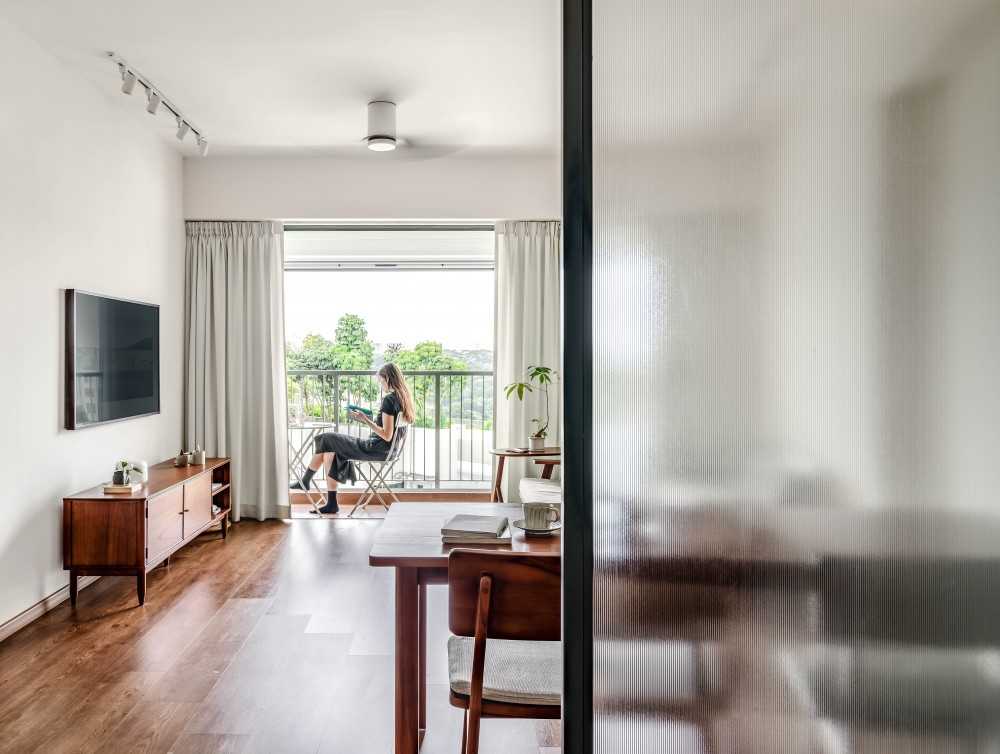

Punggol Drive ($55,000) by Weiken.com Design Pte Ltd
- Relaxation Corners: Set up dedicated relaxation corners where you can unwind, such as a cozy reading nook or a serene meditation space. Ensure these areas are free of clutter to help you fully relax and recharge, and consider using room dividers or curtains to enclose the area and create a private, peaceful space.
- Quiet Atmosphere: Make sure your calm zones are quiet spaces where you can retreat from everyday noise. Use soft, calming colours and gentle lighting to enhance the tranquility and help create a soothing environment.
- Comfortable Seating: Incorporate comfortable seating options like plush armchairs or cushioned floor cushions in your calm zones. These elements provide a cozy place to sit and unwind, contributing to a more restful and soothing environment.
- Sensory Tools: Add calming tools like weighted blankets, sensory toys, or aromatherapy diffusers to further enhance the space.
Calm zones provide dedicated spaces for relaxation and reflection, contributing to a more organized and peaceful home environment.
Implementing Daily Routines for Maintenance
Maintaining a clutter-free home requires consistent effort and daily routines to prevent clutter from accumulating.
- Daily Tidying: Incorporate a daily tidying routine to address small messes before they become larger issues. Spend a few minutes each day putting things away and straightening up common areas.
- One-In, One-Out Rule: Adopt the “one-in, one-out” rule to prevent new items from adding to existing clutter. For every new item you bring into your home, commit to removing or donating an old item.
- Routine Clean-Up: Establish a regular clean-up schedule to address areas that tend to accumulate clutter, such as countertops, entryways, and storage spaces. Regular maintenance helps keep your home organized and clutter-free.
Implementing these daily routines ensures that your home remains consistently organized and supports a serene and clutter-free environment.
Step 6: Improving Air Quality and Ventilation
Good air quality and proper ventilation are crucial for creating a healthy and comfortable living environment. In Singapore’s humid climate, managing indoor air quality and ensuring adequate ventilation can significantly impact your well-being and overall comfort.
By addressing these aspects, you can create a fresher, more pleasant living space that supports both physical health and mental clarity.
Incorporating Air-Purifying Plants
Air-purifying plants are a natural and effective way to improve indoor air quality. According to online sources, they help filter out pollutants and add a touch of nature to your home.
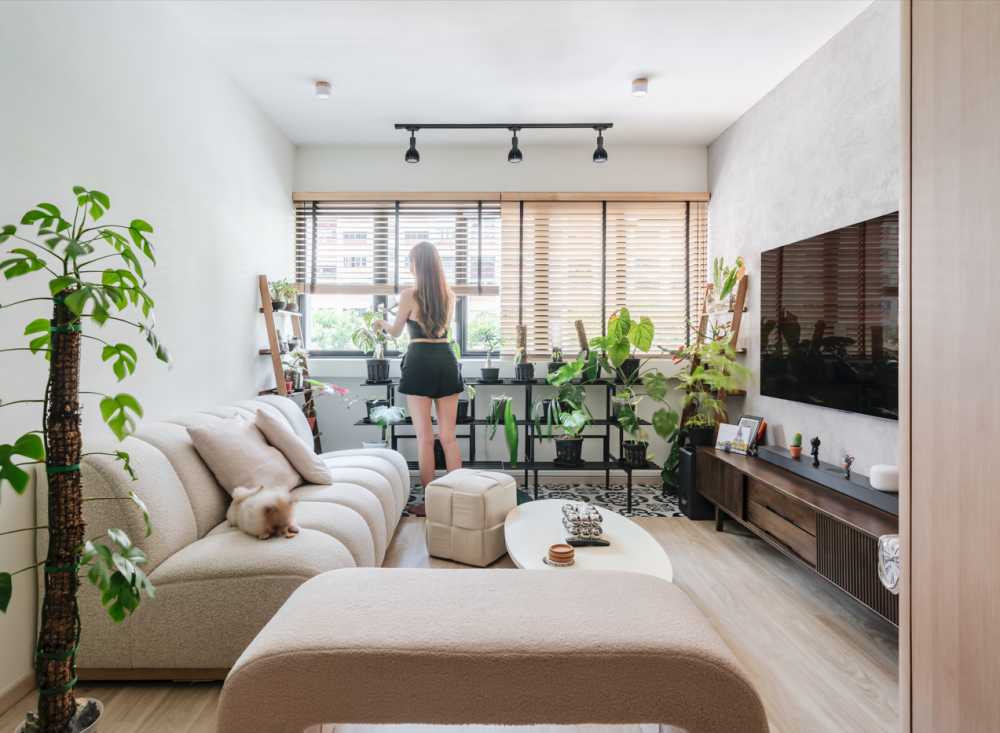

288 Bishan St 24 ($50,000) by Weiken.com Design Pte Ltd
- Popular Air-Purifying Plants: Choose plants known for their air-purifying qualities, such as snake plants and spider plants. These plants are said to be effective at removing toxins and can thrive in indoor environments with minimal maintenance.
- Placement: Place air-purifying plants in areas where you spend the most time, such as the living room, bedroom, or home office. Grouping several plants together can enhance their effectiveness in improving air quality.
- Care: Ensure proper care by providing adequate light, watering as needed, and regularly removing dust from the plant leaves to maintain their air-purifying benefits.
Incorporating air-purifying plants helps create a fresher, healthier indoor environment while adding natural beauty to your space.
Using Air Purifiers
Air purifiers are another effective tool for enhancing indoor air quality, especially in areas with higher levels of dust, allergens, or pollution.
- Choosing the Right Air Purifier: Select an air purifier with a HEPA filter, which is effective at trapping airborne particles such as dust, pollen, and pet dander. Consider the size of the room and choose a purifier with adequate coverage for the space.
- Placement: Position air purifiers in commonly used areas or rooms where air quality is a concern. Place them in central locations to ensure optimal air circulation and purification.
- Maintenance: Regularly clean and replace filters according to the manufacturer’s instructions to ensure the air purifier continues to function effectively.
- Using air purifiers helps reduce airborne contaminants and maintain a cleaner, healthier indoor environment.
Ensuring Proper Ventilation
Proper ventilation is essential for maintaining good air quality and preventing issues such as excess moisture and stale air.
- Ventilation Systems: Install or upgrade ventilation systems, such as placing fans in the kitchen and bathroom to remove excess moisture and odors. Ensure that ventilation systems are properly maintained and cleaned regularly.
- Natural Ventilation: Take advantage of natural ventilation by opening windows and doors to allow fresh air to circulate. Use window screens to keep out insects while allowing airflow.
- Cross-Ventilation: Create cross-ventilation by opening windows on opposite sides of a room or building. This technique helps promote airflow and improves air circulation throughout the space.
Effective ventilation helps prevent indoor air quality issues and keeps your home feeling fresh and comfortable.
Managing Humidity Levels
In Singapore, dealing with high humidity is a constant challenge, as it often makes the temperature feel warmer than it actually is.
Properly managing indoor humidity levels is crucial for maintaining comfort and preventing issues such as mold growth and dampness. By controlling humidity, you can create a more pleasant living environment and mitigate the effects of Singapore’s humid climate.
- Dehumidifiers: Use dehumidifiers to reduce excess moisture in areas prone to high humidity, such as bathrooms, kitchens, and laundry rooms. Choose a dehumidifier with a suitable capacity for the size of the space to effectively manage humidity levels and prevent mold growth.
- Air Conditioning: Utilize air conditioning to help regulate indoor humidity. Air conditioners not only cool the air but also remove moisture, which can make indoor environments more comfortable and less humid.
Managing humidity levels helps create a more comfortable and healthy living environment by preventing moisture-related issues and maintaining balanced air quality.
A Final Word on Designing a Sensory-Friendly Home
Designing a sensory-friendly home is all about creating a space that promotes comfort, calm, and well-being for everyone.
By focusing on soothing colours, textures, lighting, and minimizing clutter, you can create a home that’s not only functional but also feels like a peaceful retreat. Whether you’re accommodating sensory sensitivities or simply looking for a more serene environment, these design principles can transform your home into a sanctuary of comfort and calm.
Want to check out home renovation projects for more inspiration? Browse interior design ideas on Hometrust, or click the button below to get connected with expert designers!
Renovating soon? Let Hometrust recommend the best interior designers.
If you are reading this, you are probably wondering how you can create your dream home.
Here’s the thing, everyone’s needs and requirements for their home renovation is different. A designer that may work for someone else, may not quite work for you.
At Hometrust, we’re here to help match top rated designers, recommended by past homeowners to you through our data-driven and matching algorithm.
Whether you are looking for partial renovation or a full fledge overhaul, we’ll be able to recommend you top designers to match your renovation requirements and lifestyle.
Recommendations and free and you can simply start by helping us understand your needs below!
Get RecommendationsRenovate safe!
The Hometrust Team

